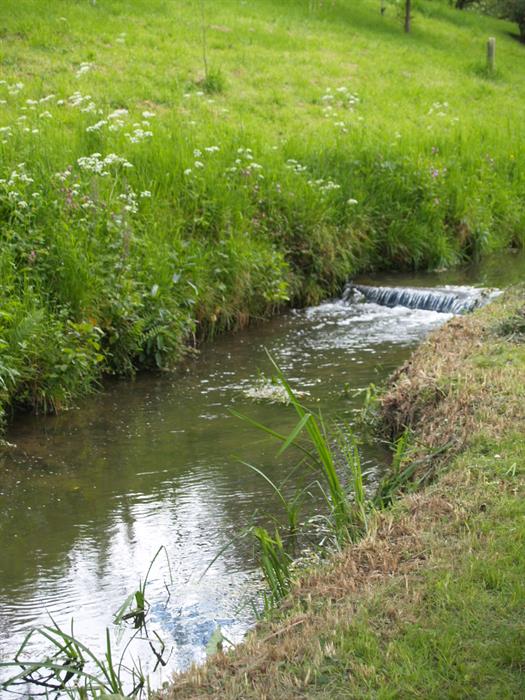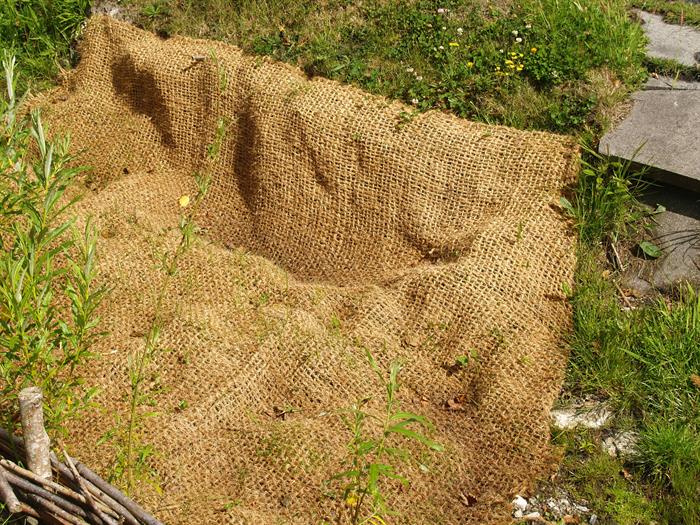Learn to Manage Wilderness Areas
This course is relevant to parks, forests, deserts, range land, heath land, swamps, zoos, wildlife reserves, or any other largely "natural" areas.
It shows you how to better manage the soils, plants and animals that are all part of the environment in any wilderness or natural ecosystem.

COURSE STRUCTURE
There are 15 lessons as follows:
- Creation & Maintenance of Australian Ecosystems -
- Plant associations
- Earthworks
- Rockeries -
- Types of rock groupings
- Plants and rockeries
- Propagation -
- Techniques
- Seed
- Cuttings, etc.
- Marketing -
- Advertising
- Brochures, etc.
- Eucalyptus -
- Introduction to/use of Eucalypts.
- Proteaceae Natives -
- Introduction to and use of the main Proteaceae genera.
- Australian Legumes -
- Introduction to Mimosaceae(e.g. Acacia)
- Introduction to Caesalpiniaceae (e.g. Cassia)
- Introduction to Fabaceae (e.g. Kennedya)
- More Native Plants -
- Introduction to other Australian plant genera; e.g. ferns, conifers, Melaleuca, Callistemon.
- Wildlife Park Management (Keeping animals) -
- Legislation
- Enclosures
- Permits, etc.
- Picnic Areas -
- Playground Design -
- Equipment
- Materials
- Safety
- Costing, etc.
- Paths & Paving -
- Types of pavers
- Laying paths and pavers
- Water Landscapes -
- Water features
- Pools
- Maintenance, etc.
- Park Interpretation -
- Techniques
- Program design, etc.
- Trail Design & Construction -
- Fun & fitness trails
- Surfacing materials
- Design
Each lesson culminates in an assignment which is submitted to the school, marked by the school's tutors and returned to you with any relevant suggestions, comments, and if necessary, extra reading.
PLANT COLLECTION
For each lesson you need to find five different plants, press(ie: preserve) a small piece of the plant ideally including a flower, identify it (include genus and species name where possible), attach the pressed specimen to a sheet of paper and write it's name and a brief description/commentary on that plant beside the pressing.
You should include details on its cultural requirements ie: feeding, watering etc, its uses ie:windbreak, flowers, shade etc, it's propagation, any common pests & diseases etc.
WHAT THE COURSE COVERS
You will learn a wide variety of things, through a combination of reading, interacting with tutors, undertaking research and practical tasks, and watching videos. Here are just some of the things you will be doing:
- Explain how by changing drainage patterns man can damage a natural environment? Consider both urban and rural areas.
- Why would you plant trees several years before planting lower plants in an area you are attempting to return to natural bush?
- How would you go about rehabilitating or establishing an area?
- Present your notes and sketches from a study of natural rock areas.
- Present photos or sketches of rockeries you have inspected.
- In what situations would you be likely to create rockeries in a wildlife enclosure? Why?
- Prepare a list of 30 Australian native plants stating how you would propagate them and why you would use that method in preference to others.
- Prepare a table of at least 20 different recreation activities that you may be familiar with that indicates how compatible these activities are with each other.
- Design a magazine or newspaper advertisement to promote a park you visited.
- Name a nature park which you know of through their marketing, though you have never visited it. What aspect(s) of their marketing have made you aware of this park?
- Describe step by step everything you need to do to grow a eucalypt from seed into a healthy plant over a ten year period.
- Select different species of Eucalyptus which you have details about and write a description and notes for each of these species.
- Write descriptions for six different species of wattles which will grow successfully in your locality.
- What are the principle uses of the Proteaceae and leguminous plants as you see them in a park situation.
- Make up a list of Myrtaceae species which will grow well in your locality.
- Draw a concept plan for the development of a wildlife park.
- Draw a detailed plan for the construction of an animal enclosure.
- Design a picnic area.
- Submit the drawing (or photo) of the picnic area you looked at with your comments on the design of that facility.
- Design a piece of park furniture and prepare a costing for the production of the item.
- List six different types of park furniture you looked at.
- Collect catalogues from lawn seed suppliers, instant lawn companies etc.
- Contact several quarries in your area. Collect samples of the materials they supply.
- Contact artificial turf companies and make up a list of materials available.
- Find three examples of bad selection of surface types in a landscape.
- List freshwater and saltwater animals that can be farmed under aquaculture management in your locality.
- Design a water feature of your choice.
- Compare the alternative methods of sign production to show the differences between methods with respect to cost, durability, the situations where it would be appropriate or inappropriate to use each type.
- Design a sign which will enable visitors to distinguish between the different animals in an enclosure.
- Write a short piece of literature for children which relates what you can observe in an enclosure.
- Suggest a supervised activity for children which could be used in a wildlife park during school holidays.
- Design a trail.
Duration 100 hours

LEARN ABOUT DIFFERENT TYPES OF NATURAL LANDSCAPES?
Nature will take control of any area that is not interfered with by man. Whether through neglect or intent; the forces of nature are powerful, and any area fashioned by nature has the potential to be set aside as a nature park, then managed with measured interference.
Areas of land in nature parks which have been cleared and used by humans, whether for farming, housing, or some other purpose, can be returned to their natural condition - although it will be impossible to recreate the original ecosystem exactly as it might have been if left undisturbed.
Plant Associations
Some plants will grow well in association with certain species but not with others. When re-establishing a natural environment in a previously disturbed area it is important to establish the right combination of plant varieties if the area is to remain stable and have the "self-perpetuating" ability which a "real natural environment" has.
In order to revegetate an area successfully this way, it may be necessary to plant taller trees and allow them to establish properly before planting the lower growing plants as well as a vigorous weed control program to give your desired plant species a chance to establish.
Types of Plant Associations
Plant associations are large areas characterised by a specific type of vegetation. There are many different types of plant associations and many different ways of categorising them. These include categories based on:
- Climate - for example: warm temperate rainforest, cool temperate rainforest, alpine, arid etc.
- Broad characteristics - for example: deciduous forests, coniferous forests, wet or dry sclerophyll forests, grasslands etc.
- Individual plant genera - for example: Quercus, Eucalyptus, Pinus, Acacia etc.
- Individual plant species - for example: Acacia boormanii, Acacia melanoxylon, Acacia acinacea, etc.
Examples of Plant Associations
Pinus monoculture
Radiata Pine trees (i.e. Pinus radiata) have a toxic chemical in their needles which discourages the growth of most other plants. When a pine plantation is young, other plant types may grow alongside the pines, but as they mature, most of the nearby plants will die, leaving a forest with very little growing other than the pines.
Evergreen Hardwood Forest
A eucalypt forest (or woodland) usually contains three types of plants:
- The trees - these are normally the tallest plants, and are called the "upper storey".
- Medium to tall plants (smaller than trees) such as shrubs, and climbers. These are called the "middle storey".
- Low shrubs and ground covers, called the "lower storey".
Deciduous Forest
This type of forest is common in the Northern Hemisphere. Generally, in deciduous forests the upper storey is made up of deciduous trees such as Ash, Maple, Birch, Oaks and Elms. The lower plants may be deciduous or evergreen shrubs.
Alpine Communities
These consist of plants adapted to either short or long term periods of cold and snow. In many cases these communities are found in high mountainous, often windswept areas. Examples of plant associations that may occur within this broad category are alpine grasslands where the predominant vegetation is low growing grasses, bulbs, herbs and annual flowers, or alpine moss fields consisting predominantly as the name implies of mosses.